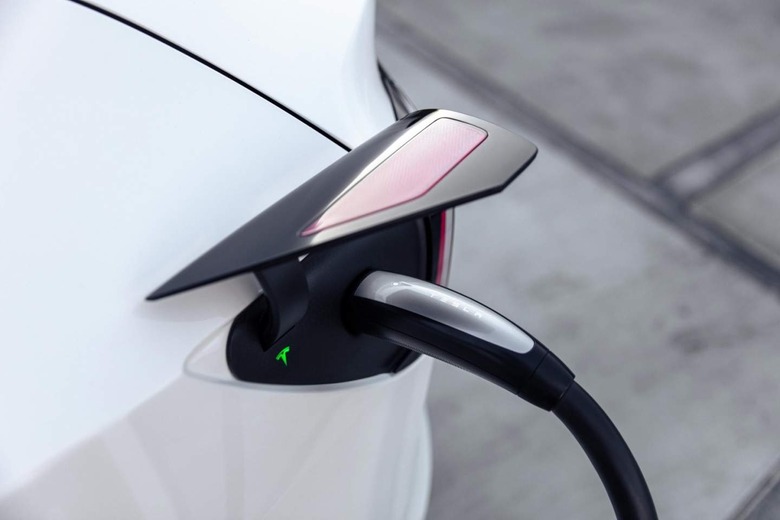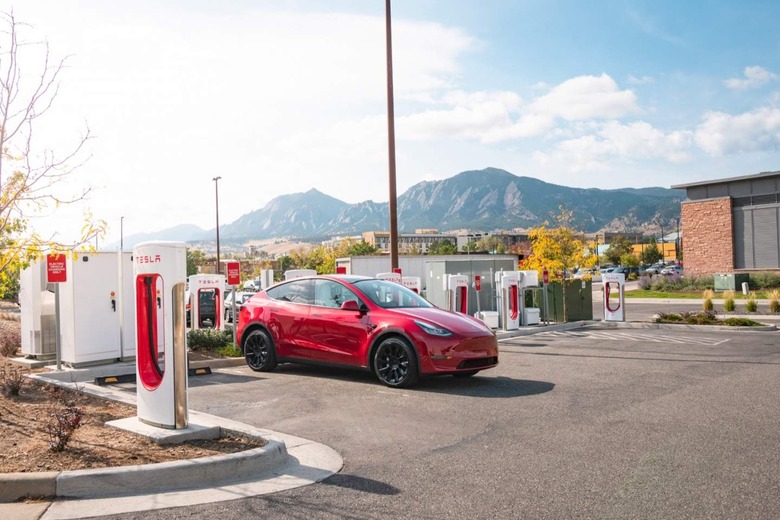Tesla Trials Supercharger Access For Any EV In Pivotal Pilot
Tesla is trialing guest access to its Supercharger network, lighting up a pilot in Europe which will allow drivers of other electric vehicles to plug in at what have until now been exclusive to Tesla owners. Ten locations in the Supercharger network in the Netherlands are opening up initially, ahead of what the automaker says will be an expansion of the pilot to other countries.
"It has always been our goal to open the Supercharger network to electric vehicles from other brands in order to encourage more drivers to switch to electric mobility," Tesla said of the project (via Google Translate). "After all, this step directly supports our mission to accelerate the global transition to sustainable energy."
The ten initial locations will be in Sassenheim, Apeldoorn Oost, Meerkerk, Hengelo, Tilburg, Duiven, Breukelen, Naarden, Eemnes, and Zwolle. Initially, only non-Tesla drivers who live in the Netherlands will be eligible to take part. Supercharger access remains unchanged for Tesla drivers.

To charge, non-Tesla owners will need the Tesla App (version 4.2.3 or higher) for iOS or Android, and a Tesla account. They'll also need to register a payment method. Exactly how much charging will cost will depend on the location; fees will consider factors like "the additional costs involved to support charging a variety of vehicles, as well as the necessary adjustments to our locations to accommodate those vehicles," Tesla says.
The rates will, it's likely, be higher than what Tesla owners pay. There are also the same occupancy fees that apply to drivers who leave their cars plugged in and in the charging station bay, preventing other drivers from using it. Tesla plans to offer a membership to the Supercharger network, which will reduce the charging fees per kWh.
Initially, there'll be CCS connectors on specially-upgraded Supercharger stations. Those will be marked with a special identifier on the base. The Tesla app will show details on the specific chargers and their current status – i.e. whether they're in use or not – just as Tesla drivers can see those details through their EV's dashboard.

It's a move that is likely to be controversial among Tesla owners. While some electric vehicle-makers have experimented with installing charging facilities, none has gone to the same extent as Tesla did as it built out the Supercharger network. Now more than 25,000 chargers strong worldwide, it's undoubtedly been instrumental in coaxing EV skeptics into giving a fully-electric car a try.
At the same time, it's been held up as an example of how to run a charging network most effectively for EV owners. Rather than expecting drivers to juggle multiple apps and memberships for a variety of third-party networks, Tesla drivers can be pretty certain of finding high-speed charging support at a local Supercharger or one along their planned route.
Indeed, the biggest headache has typically been capacity. In Tesla's early days, Supercharger access was a free perk for the automaker's most expensive models. In more recent years, however, sales have boomed, particularly of the Model 3 and Model Y, and at peak times there can be a wait for charging access at popular locations.
That's something, Tesla says, it'll be monitoring closely as part of this pilot. "Tesla drivers can continue to use these stations as usual," the automaker says, "and we will closely monitor each location for bottlenecks and of course take feedback from our customers into account for any adjustments."
The long-term goal, meanwhile, is to open up every Supercharger station to any EV owner. That may still be some way out, and Tesla insists it'll only expand the pilot if capacity at other locations permit that. Still, there's a growing number of electric vehicles on the roads and yet no other automaker has truly stepped up to build its own charging network. Much as it did in getting in early with EVs, Tesla could end up stepping in to satisfy that simple charging need too.
